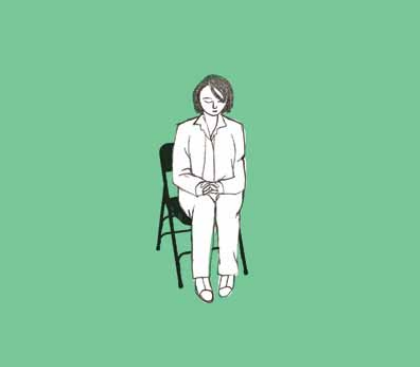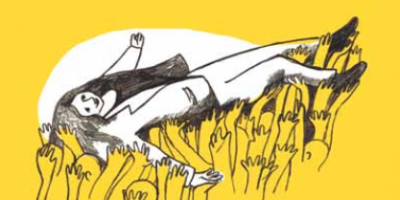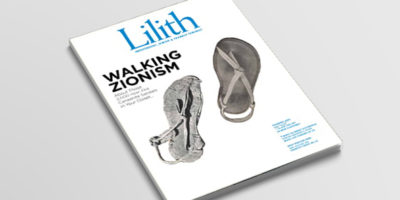
in owning an abusive biblical text
Two friends round up the biblical Hannahs and Elis in their own lives.

by Hila Peleg
Every year in synagogue, we hear the story of Hannah, a childless woman who was taunted by her husband’s other wife, Peninah, for being infertile. Like most of the stories in Hebrew Scriptures, the narrative is extravagantly spare, and the spareness allows the readers to connect the dots, to align circumstances in one’s own life to texts that have been handed down through millennia.
In the Bible story, we see Hannah praying — fervently, desperately — and Eli the Priest mistaking her spiritual intensity for drunkenness.
“How long will you make a spectacle of yourself? Sober up!” Eli tells her.
“You are mistaken,” Hannah replies. “I have drunk no wine or other strong drink. I am an unhappy woman, pouring out my heart to God.”
“Then go in peace,” Eli says, chastened. “And may God grant you what you ask.”
When congregation P’nai Or in Portland, Oregon, asked the two of us — we’re friends — to deliver a commentary on this story, we realized that the narrative left us with a lot of questions. How did Hannah feel when the High Priest of Shiloh didn’t “see” her? How did Eli feel, realizing he had shamed a woman already crushed with pain?
As we talked more, we recognized that these archetypes live on. We see Hannah’s humiliation and Eli’s misjudgment in ourselves, our parents, and our acquaintances. The point of the Hannah and Eli story, after all, is that it’s still with us.
1954: Bob remembers
The women’s psychiatric ward, the locked section, smelled of both disinfectant and unflushed toilets. Even in the middle of the night, the flickering fluorescent lights in the hall and dayroom shone into the patients’ rooms, interfering with sleep, as did the shouts and wall-banging of a new patient in the holding area.
A woman walked down the hall, her short, greying hair uncombed, the puffiness around her eyes hinting at lack of sleep. Something she carried jingled as she walked.
The night nurse spied her. “Give me those keys,” she said.
“I need them,” replied the disheveled woman.
The nurse stood in front of the woman, arms crossed. “Patients can’t have keys.”
The woman stood firm. “I’m not a patient. I’m the doctor.”
“Yeah, right.” The nurse reached out her hand. “Give me the keys!”
The disheveled woman was the psychiatrist on call, just awakened to evaluate the new patient. It felt like a long time before another nurse arrived, recognized her, and convinced the night nurse that the doctor on call was indeed not a man, but a woman. This woman.
This is the story of my mother, a daughter of Hannah.
1965: Pam remembers
The doctor wore a white coat and tie. He sat behind his polished wooden desk as he lectured the female patient. With the door of his office open, his words spilled out into the crowded waiting room:
“It’s not unusual for bored housewives to have these kinds of symptoms.”
Oh, she thought. The excruciating headaches, the intermittent blindness — all imagined.
Exhausted from feeling ill and now unsure of herself, she left his office feeling hopeless and in despair.
Fortunately, the “bored housewife” — who worked full-time as a psychologist while raising two children — found the courage to consult a specialist. He diagnosed toxoplasmosis, a rare parasitic infection that had caused scar tissue to damage her eyes and to press on the nerves in her face.
This is the story of my mother, a daughter of Hannah.
1987: Pam
In her boss’s car on the way back from the meeting, she tried to gulp down her coffee before the traffic light turned green. Wanting to create the appearance of confidence and maturity, she was wearing her favorite scarf, its rich shades of blue complementing her grey pants suit. Her boss peeled away from the light and the coffee spilled on her suit and the car’s upholstery. Stammering an apology, she tried to wipe the seat with her scarf. Her boss pulled the car over, grabbing some tissues to complete the cleanup. Then he reached for her hand, trapping it against his thigh.
“You’re so sweet. We really should spend more time together. You know I have a cabin at Sunriver?” He leaned toward her, his wedding ring, as always, unmistakable.
She was the coordinator of their sexual-assault treatment program, teaching children and adults about their right to say “No!” to any unwanted touch.
“You’re propositioning me,” she replied, calmly, but firmly. “That’s not acceptable behavior.”
Or, rather, that’s what she thought about later. At the time, startled, she just mumbled something about being busy.
This is the story of a daughter of Hannah, a tongue-tied daughter who remained silent when Eli spoke. This is my story.
2007: Bob
He sits at his computer with the study door closed, working on a research report. Although it is 10pm, he is still wearing slacks from his day at the university; when he got home he had only taken time to remove his tie and unbutton the top button of his shirt. He cracks his neck to try to relieve the pain from three uninterrupted hours of statistical analysis and manuscript typing.
The culmination of four years of work, this manuscript is important: it will document how Medicaid cutbacks hurt the most vulnerable in our society. He hopes it will make a difference.
He tries to shut out the noise of his wife’s telephone conversation down the hall. Esther is also an academic physician. Hearing her chattering heightens his chronic annoyance with her; in an academic world where publications and grants are the measures of success, it seems that all she does is talk and email. And he doesn’t see how her long phone conversations will impact the health of the public she wants to serve.
When he finally comes to bed after midnight, she is already asleep. He places a pillow as a barrier between them. As he tries to sleep, he grinds his teeth thinking about her time-wasting.
This is my story, the story of a son of Eli.
Today: Bob
Through those phone calls and emails Esther has developed a rich network of collaborators. She has been promoted to the rank of professor and heads a nationally-recognized Center of Excellence. She leads a team of physicians, researchers and staff members. A dozen faculty members view her as their mentor. Her advice is sought by legislators and other policy-makers, and her work affects women throughout the United States.
As I came to recognize Esther for who she is, I saw a woman whose talents are different from mine but whose strengths are many. My vision has cleared, and when my beloved looks into my eyes, she sees that clarity and respect for her. When we go to bed at night, she reaches out to me with confidence. Sometimes we make love.
This is the story of a daughter of Hannah who stayed on her true path, just as Hannah corrected Eli, saying, “You are mistaken.”
And she has opened the eyes of this son of Eli.
As the two of us felt our way into the eternality of this biblical story, we shared these insights with our congregation, along with this prayer:
May we be blessed to stand in the Temple with the daughters of Hannah. May we hold hands with those whose tongues cannot form words, with those who say “Yes” because their “No” has never been an option.
May we build our lives of such breath and music that when the High Priest orders us to leave, our feet are roots and our hearts open flowers.
May we hear Hannah’s words, “You are mistaken,” as a loving declaration of strength. And may that declaration open our eyes to healing, love, and peace.
Amen.
Robert A. Lowe is an emergency physician and a published poet. A commentary of his on Hebrew Scripture has been published in Drash: Northwest Mosaic.
Pam Crow is a clinical social worker living in Portland, OR. She won the National Astraea Award for Emerging Lesbian Writers in 1996, and is the author of a book of poetry, Inside This House.



